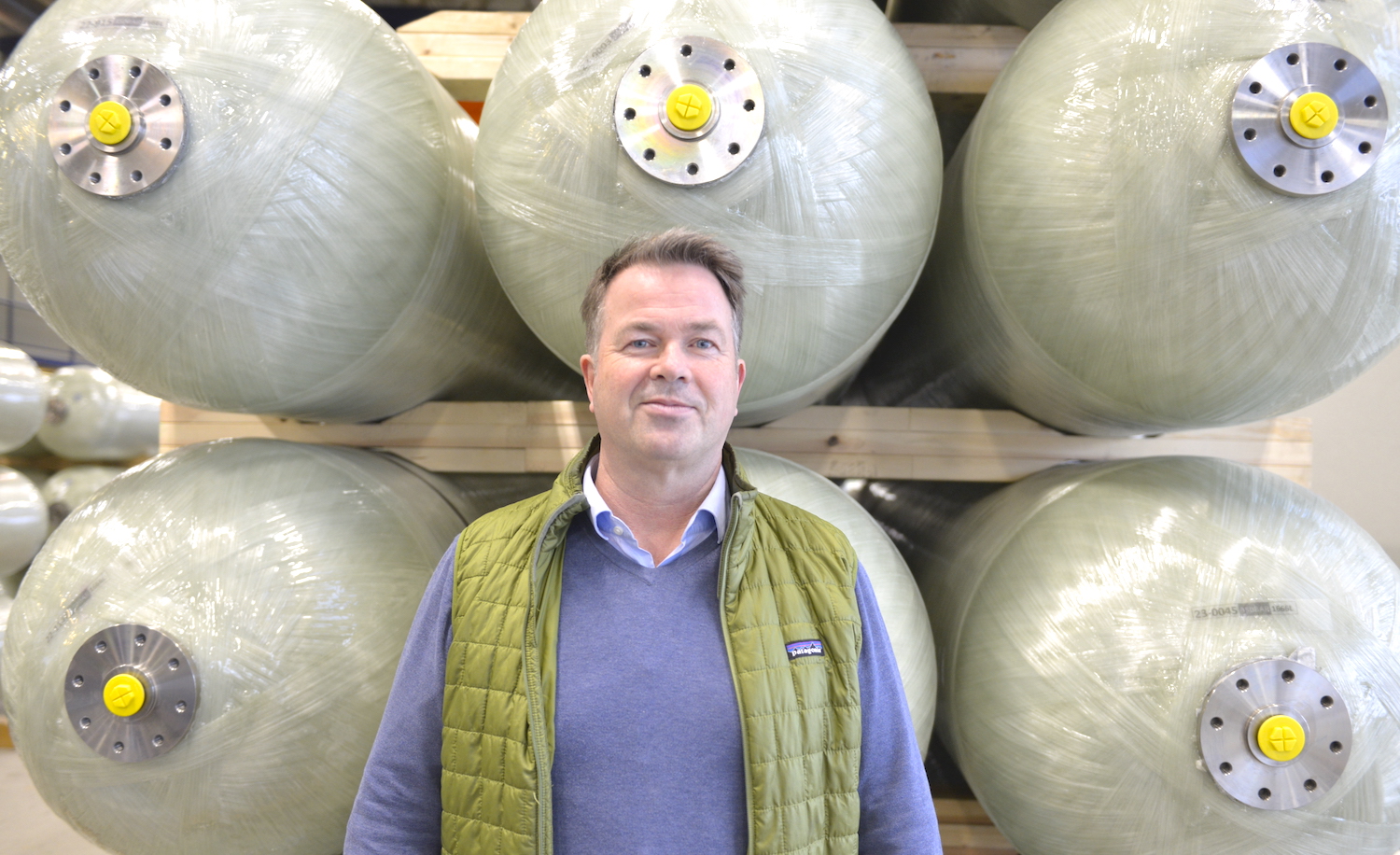In what used to be a production facility for a Kristiansand tobacco company, Umoe Advanced Composites, UAC, is experiencing tremendous success. The former supplier to the oil and gas industry has transitioned to the hydrogen industry and is not looking back.
In 2022, UAC recorded more than NOK 200 million in revenues, up from just NOK 33 in 2017. This year, the company expects to exceed 300 million NOK in turnover, with prospects of an even brighter future.
“We are well positioned for further growth, as the emerging markets for hydrogen and biogas will require lots of low weight pressure vessels and modules for cost effective transportation and storage “, says Ola Engehagen, Chief Commercial Officer of Umoe Advanced Composites.
Continued increase in production means more hires. UAC is looking for expertise within various fields, such as materials technology, electronics, and automation.
UPS AND DOWNS IN OIL & GAS
Shortly after the famous tobacco company Asbjørnsen folded in 2005, UAC moved in and began production of large pressure vessels for compressed gas. During its first years, the company relied heavily on the offshore sector, delivering super strong, low weight composite pressure vessels to semi-submersible oil rigs and drill ships, offshore and subsea cranes, winches, and heave compensation accumulator systems. UAC’s vessels replaced steel vessels, which were heavier and came with a shorter life span expectancy.
In 2014, plummeting oil prices significantly decreased demand for UAC products. The downturn in oil and gas turned out to be a game changer for the company, which found new and promising markets onshore.
According to Ola Engehagen, land-based transport of gas had traditionally been based on steel tanks. The market was overripe for UAC’s light weight and strong composite pressure vessels.
“We signed our first contract with AGA/Linde . Since then, demand has continuously grown. Our tanks can withstand up to 450 bar pressure and transportable modules can hold three times more gas compared to steel solutions,” says Engehagen.
Gas vessels produced in Kristiansand are six to seven meters long and approx. 75 centimeters in diameter. They are made from a gas-tight core of polyethylene and reinforced with a coat of high-strength glassfiber and epoxy. The coating ensures that the tank can withstand very high pressure. Filled with hydrogen in gaseous form, such a tank holds more than 50 kilograms of gas, which corresponds to the energy needed to drive a car 6,000 kilometers.
BRIGHT PROSPECTS
Gas tanks from UAC are used to transport gas from a production site to the customer, or as fuel tank for ferries and different types of cargo and offshore ships . Tanks are transported in specially designed container modules that hold 18 to 22 interconnected pressure vessels.
Compressed natural gas and biomethane modules were dominant in the first years, but since 2018 hydrogen has rapidly taken a bigger share. In 2022, 80 percent of revenue was related to hydrogen.
“Hydrogen is an important source of energy both in power-intensive industry and for land- and sea-based transportation for years to come. In Switzerland, the ambition is to have 1,600 hydrogen-powered trucks on the road by 2026. Building a countrywide network for fueling will require 100 filling stations. We collaborate with Hydrospider on deliveries to such stations,” says Engehagen.
In Norway, hydrogen is an emerging industry which will present business opportunity for UAC.
“We are perfectly positioned in the market and working hard to capture new market shares. Being the only supplier of high-strength pressure vessels of this size and capacity, we will play an important role in the green transition,” says Engehagen.




